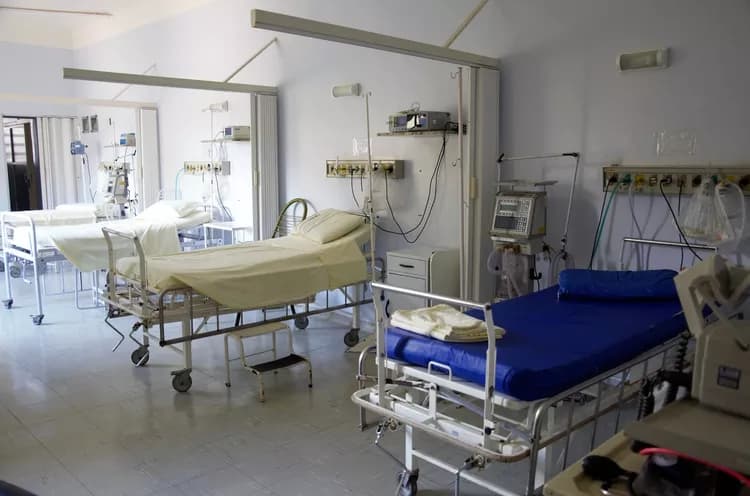
Could Copper, the “Contact Killer,” Help Bring Down the Hospital-Associated-Infections?
Hospitalization, anywhere in the world, increases the risk of a patient getting infected with dangerous microbes. Of the three types of microbes that the Centers for Disease Control and Prevention (CDC) categorized in the “urgent” threat category, two are responsible for “Hospital Associated Infections” or HAIs. As reported by DoveMed, recent research implies that the spread of resistance to an antibiotic, like carbapenem, from one such dangerous species of bacteria to other commonly occurring microbes is just a matter of time.
An increase in Methicillin-resistant Staphylococcus aureaus (MRSA) infections in hospital patients have been reported in the United States in the past few years as well. These reports underscore how immediate an infection threat is to hospitalized patients who are vulnerable and already dealing with illness. An occurrence of infection during hospitalization extends their stay, could cause serious harm or even death, and escalate healthcare costs by billions of dollars annually.
Disinfectants are used routinely in hospitals and healthcare settings to tackle the problem/s of microbial contamination. Disinfectants do kill microbes, but keeping ahead of the pathogens is an ongoing and exhaustive process, as the microbes are reported to quickly rebound to pre-disinfection levels. We, therefore, need an agent that not only kills pathogens on contact, but also keeps their number to a minimum between cleanings, thus significantly reducing HAI occurrences.
Historically, copper was used in ancient Egypt to sanitize chest wounds, as well as drinking water, writes Dr. Grass and colleagues in their research article. Copper use was also prevalent in other ancient cultures of the world. It is no surprise, therefore, that copper has made a comeback and is increasingly gaining recognition as an anti-microbial agent.
It has been scientifically proven that copper kills bacteria, yeasts and viruses on contact. It has therefore been called a “contact killer.” This property of the metal makes it desirable in hospital settings. A study in 2013 by Dr. Salgado and her research group found in ICUs of three hospitals that, “…placing a copper alloy surface onto 6 common, highly touched objects in ICU rooms reduced the risk of HAI by more than half at all study sites.”
Currently, some clinical trials have been completed using copper bed railings while others are ongoing. One such facility testing the efficacy of copper in cutting down HAIs is the Grinnell Regional Medical Center in Iowa. Multiple surfaces – sinks in bathrooms and handles, toilet flushes, grab bars, soap and alcohol dispenser push plates, outlets at the head of the bed, handles on the bedside table, handles going into patient rooms, handles going into pass-throughs to the rooms, IV poles, etc. have been changed to a copper alloy for the study, which is directed by Grinnell College Associate Professor of Biology Shannon Hinsa-Leasure.
Terri Kelling, RN, the Infection Prevention Coordinator at the hospital tells DoveMed, “The trial started last fall and the results look very promising so far. We do weekly swabs to test for bacteria and have seen an overall reduction in their number. We want to do everything to minimize the risk/s of infection to patients and improve their overall hospital experience.”
“We are very excited to be teaming up with Grinnell College as our research partner and the company that manufactures the copper alloys for hospital surfaces to advance the knowledge about how copper can be effective in our efforts to reduce the bacteria load our patients and staff members are exposed to everyday,” adds Todd Linden, President and CEO of Grinnell Hospital.
Such commitment is indeed good news for patients and healthcare workers alike.
Written by Mangala Sarkar Ph.D.
References:
1. (2013 Mar 5). CDC: Action needed now to halt spread of deadly bacteria. Retrieved from: http://www.cdc.gov/media/releases/2013/p0305_deadly_bacteria.html
2. (2014 Apr 28). Mission Critical: Preventing Antibiotic Resistance. Retrieved from http://www.cdc.gov/features/antibioticresistance/
3. (2012 Apr 20). Methicillin-resistant Staphylococcus aureus (MRSA) Infection in Healthcare Settings. Retrieved from http://www.cdc.gov/HAI/organisms/mrsa-infection.html
4. (2015 Apr 1). The Making of Superbugs: How Real Is the Threat? Retrieved from http://www.dovemed.com/current-medical-news/making-superbugs-how-real-threat/
5. Hannah, B. (2005). Statistics. Retrieved from http://www.mrsasurvivors.org/statistics
6. Attaway, H., Fairey, S., Steed, L., Salgado, C., Michels, H., & Schmidt, M. (2012). Intrinsic bacterial burden associated with intensive care unit hospital beds: Effects of disinfection on population recovery and mitigation of potential infection risk. American Journal of Infection Control, 40(10), 907-912.
7. Grass, G., Rensing, C., & Solioz, M. (2011). Metallic Copper As An Antimicrobial Surface. Applied and Environmental Microbiology, 77(5), 1541-1547.
8. Casey, A., Adams, D., Karpanen, T., Lambert, P., Cookson, B., Nightingale, P., . . Elliott, T. (2010). Role of copper in reducing hospital environment contamination. Journal of Hospital Infection, 74(1), 72-77.
9. Mikolay, A., Huggett, S., Tikana, L., Grass, G., Braun, J., & Nies, D. (2010). Survival Of Bacteria On Metallic Copper Surfaces In A Hospital Trial. Applied Microbiology and Biotechnology, 87, 1875-1879.
10. Salgado, C., Sepkowitz, K., John, J., Cantey, J., Attaway, H., Freeman, K., . . . Schmidt, M. (2013). Copper Surfaces Reduce the Rate of Healthcare-Acquired Infections in the Intensive Care Unit. Infection Control and Hospital Epidemiology, 34(5), 479-486.
11. Schmidt, M., Attaway, H., Sharpe, P., John, J., Sepkowitz, K., Morgan, A., . . . Salgado, C. (2012). Sustained Reduction of Microbial Burden on Common Hospital Surfaces through Introduction of Copper. Journal of Clinical Microbiology, 50(7), 2217-2223.
12. Sharpe, P., & Schmidt, M. (2011). Control and Mitigation of Healthcare-Acquired Infections: Designing Clinical Trials To Evaluate New Materials and Technologies. Health Environments Research and Design Control, 5(1), 94-115.
Related Articles
Test Your Knowledge
Asked by users
Related Centers
Related Specialties
Related Physicians
Related Procedures
Related Resources
Join DoveHubs
and connect with fellow professionals

0 Comments
Please log in to post a comment.